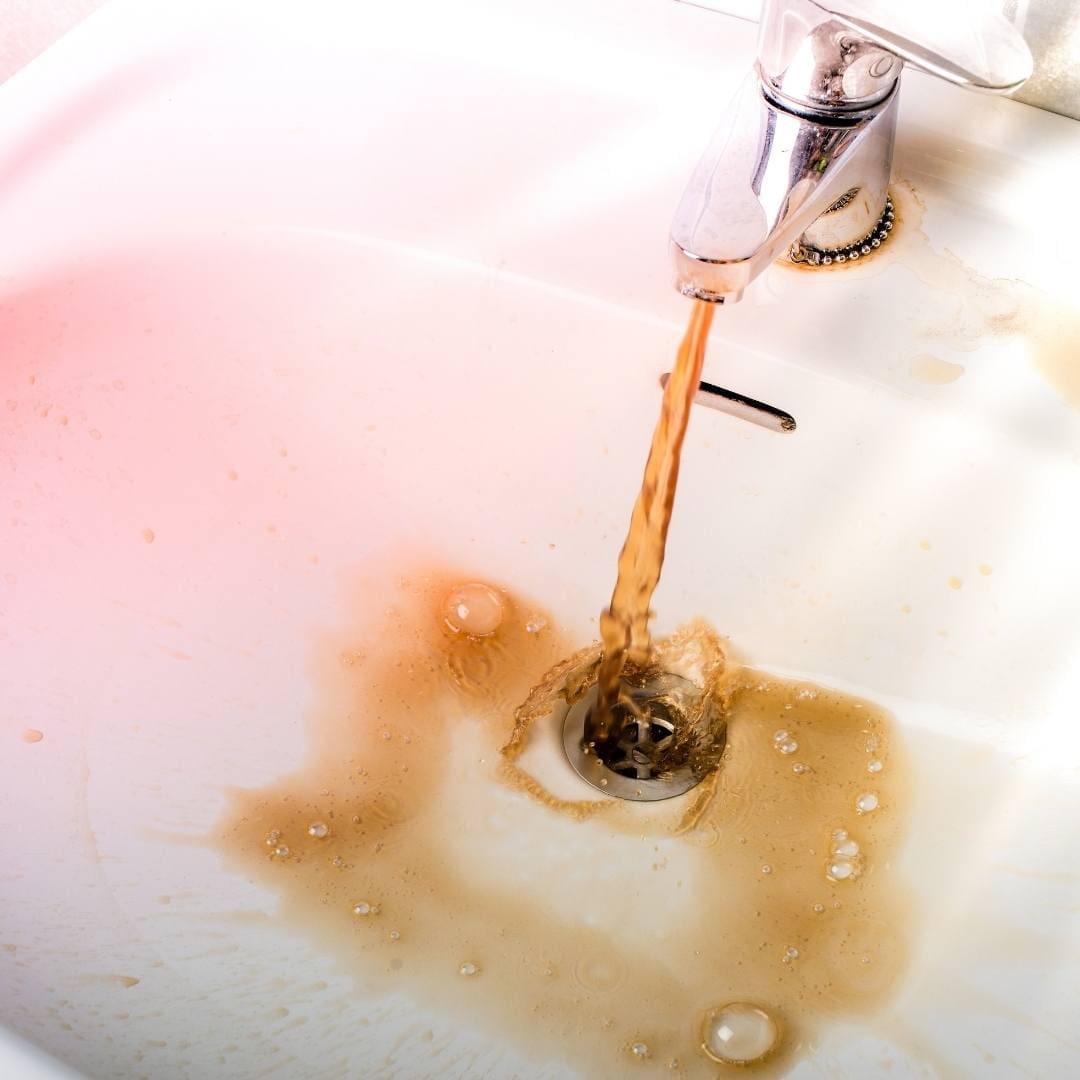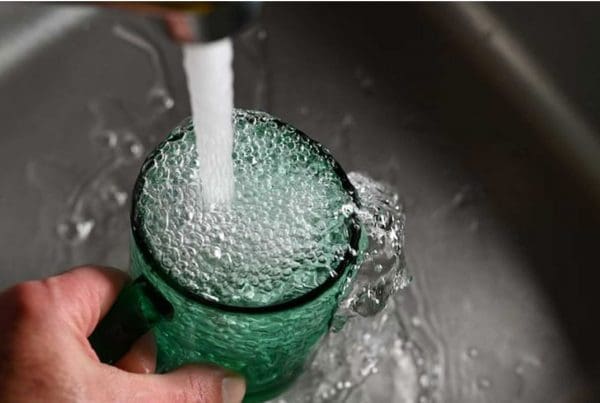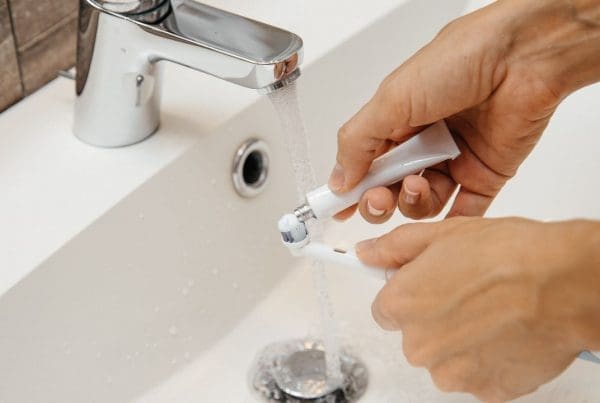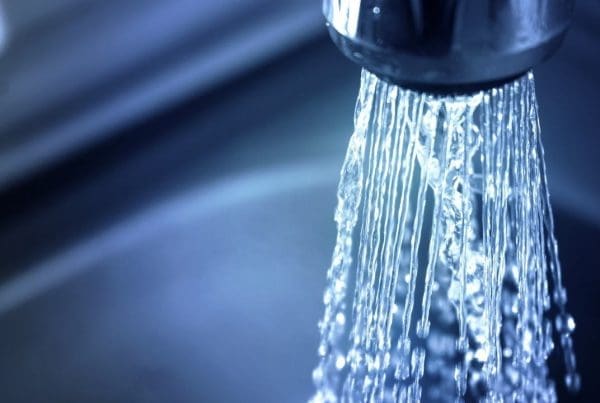Most Common Water Problems and Remedies
Many Americans take clean water for granted. Sometimes, however, the water coming out of the faucet may have problems—discoloration, bad taste, odors or even unseen bacteria. This is especially common in older homes or homes with well water. Here are some of the most common water problems and practical ways you can address them.
Hard Water
Problem—Excess calcium and magnesium—two minerals found in all-natural water supplies—leads to water “hardness.” Hardness is due to calcium and magnesium dissolved from bedrock. There is no drinking standard but a hardness level above about 7 grains per gallon is most likely to cause these symptoms. Hard water causes limescale to build up in pipes, decreasing their efficiency and sometimes causing permanent damage.
Remedy—a home water softener that works by ion exchange, which runs water through a softening appliance filled with a sodium solution; essentially, sodium replaces the calcium and magnesium in the water. Some companies will claim they can soften water without salt, but these claims are misleading.
Bacteria
Problem—Cryptosporidium, E. coli, Hepatitis A, Giardia, and other pathogens. Drinking water supplies in the United States are among the safest in the world. However, even in the U.S., drinking water sources can become contaminated, causing sickness and disease from waterborne germs.
Remedy—Treating bacterial contamination requires a disinfectant method, most commonly chlorination. UV light disinfection is also a great tool to mitigate bacteria in your water. The experts at C and J Water can determine the source of the contamination and fix the problem.
Hydrogen Sulfide
Problem—When hydrogen sulfide is present, water smells like rotten eggs or sulfur. This colorless gas is extremely corrosive to metal pipes, turning them black and can eventually cause leaks.
Do you only smell rotten eggs when you turn on hot water? This could mean that the smell is coming from your water heater. Water heaters are metal, which means they are also susceptible to corrosion. If your problem isn’t bacteria, then it’s possible that parts of your water heater are corroding and affecting the water. A common issue is your anode rods. Anode rods are an essential part of your water heater that helps to accumulate corrosive properties in the water and protect the rest of the tank. This means, however, that the anode rods corrode by nature.
Remedy—If the smell is coming from all of your water, no matter what, then this means the problem is coming from your well system or groundwater. A water specialist can diagnose the problem according to cause and location. The experts at C and J Water have dealt with all of these smelly water problems, and more. Usually, we recommend AIO odor & iron removal, BIF chemical-free iron filters, or a dechlorinator, depending on the root cause and severity of the smell.
 Sediment & Turbidity
Sediment & Turbidity
Problem—Sediment and turbidity refer to fine particles of sand, scale, clay, rust, dirt, or organic materials that are suspended in the water. They’re often present in water drawn from ponds, lakes or rivers, but can also be found in underground aquifers.
Remedy—Adding a sediment pre-filter to your water filtration system will reduce turbidity. A sediment filter is a replacement cartridge used to remove large particles from the water supply to protect other water treatment equipment. UV protection may be necessary if the source of turbidity is microbial.
Iron & Manganese
Problem—Iron and manganese, often found in groundwater supplies, give water a cloudy or rusty appearance. They also cause dark brown or rust-colored stains on plumbing fixtures, cookware and laundry, and have a metallic or astringent taste. If you are experiencing black stains on your shower, toilet, plumbing fixtures, or laundry, it is likely you have manganese in your drinking water and it is recommended you have your water tested.
Iron typically appears within well water in two common forms:
Ferric Iron—This is also called “Red-Water Iron.” Ferric iron is clear well water that has been exposed to oxygen, oxidized forming visible rust, giving the water a reddish color.
Ferrous Iron—This is also called “Clear-Water Iron.” This form of iron cannot be seen in the water because it is soluble or can be dissolved in water. Ferrous Iron often comes from deeper wells or water sources.
Remedy—A professional water well cleaning. We remove sand, silt, and other sediments from the source—the bottom of your well. If you are noticing a lot of debris in your filter or worse yet in your sinks, toilet backs, and tubs, please consider a well cleaning. c and j recommends this service every 10 years to keep your well healthy and functioning properly.
Also, a water softener will remove moderate amounts of iron, but additional iron filters or oxidation filtration may be needed. Sediment Filters remove suspended matter such as sand, dirt, rust, loose scale, clay, or organic material from the water. Untreated water passes through a filter medium that traps suspended matter. Sediment filters can remove insoluble (not dissolvable) or suspended iron and manganese. Sediment filters are for pre-filtering water to remove large sediment from a water supply. They are best installed where the water enters your house, also known as Point of Entry (POE). Generally, this kind of filter is installed before any other whole house filters or appliances. By removing sand and large sediment upfront, the life span of other filters and appliances is increased. Ion exchange water softening, distillation, filtration, and reverse osmosis are all proven remedies to remove manganese. Furthermore, reverse osmosis filters will remove both iron and manganese from drinking and cooking water.
PFOA & PFAS
Problem—Many homeowners with both city and well water have begun experiencing contaminants called “forever chemicals” like PFOA, PFAS. Per-and polyfluoroalkyl substances (PFAS) are a large family of man-made chemicals that contain carbon, fluorine, and other elements. These chemicals have been in use since the 1940s and are found in a variety of products including firefighting foams, household products such as non-stick cookware, food packaging, and stain and water repellants. It is estimated the drinking water supply for at least 16 million people is contaminated with PFAS. PFOA was used particularly for manufacturing polytetrafluoroethylene, but since 2002, manufacturers have used a new process not requiring this chemical. PFOA persists in the environment and does not break down. PFOA has been identified in bodies of water and in a variety of land and water animals.
Research has shown potential health impacts of PFOA/PFOS exposure include low infant birth weight, decreased fertility, elevated cholesterol, abnormal thyroid hormone levels, liver inflammation, weakening of the immune system, and testicular and kidney cancer. These chemicals are persistent and resist degradation, meaning they accumulate in the environment and in your body over time.
Remedy—Water treatment technologies that have been independently tested to show that they are capable of removing PFAS from drinking water in your home include activated carbon filtration, reverse osmosis (RO), and water softeners with ion-exchange treatment.
 Lead
Lead
Problem—You cannot see, taste, or smell lead in drinking water. The most common sources of lead in drinking water are lead pipes, faucets, and plumbing fixtures. Certain pipes that carry drinking water from the water source to the home may contain lead. Household plumbing fixtures, welding solder, and pipe fittings made prior to 1986 may also contain lead. Lead is a toxic metal that is persistent in the environment and can accumulate in the body over time. Risk will vary depending on the individual, the chemical conditions of the water, and the amount consumed. Heating or boiling your water will not remove lead. Because some of the water evaporates during the boiling process, the lead concentration of the water can actually increase slightly as the water is boiled.
Remedy—Ask to have your water tested. Many public water systems will test drinking water for residents upon request. There are also laboratories that are certified to test for lead in water. Try to identify and remove the lead source. If you have a private well, check both the well and the pump for potential lead sources. A licensed well water contractor can help you determine if any of the well components are a source of lead. You may also wish to consider water treatment methods such as reverse osmosis, distillation, and carbon filters specially designed to remove lead.
Indeed, there are many types of problems that can impact the water in your home, but the WQA experts at C and J Water have the remedies you need. In the immortal words of Robert Matthew Van Winkle, aka, Vanilla Ice, “If there is a problem—yo, we’ll solve it” Contact us today!


 Lead
Lead

